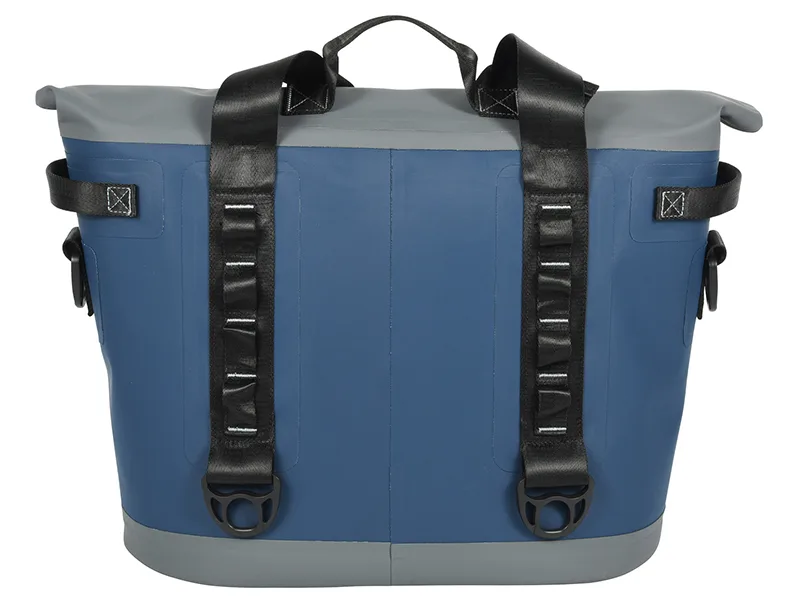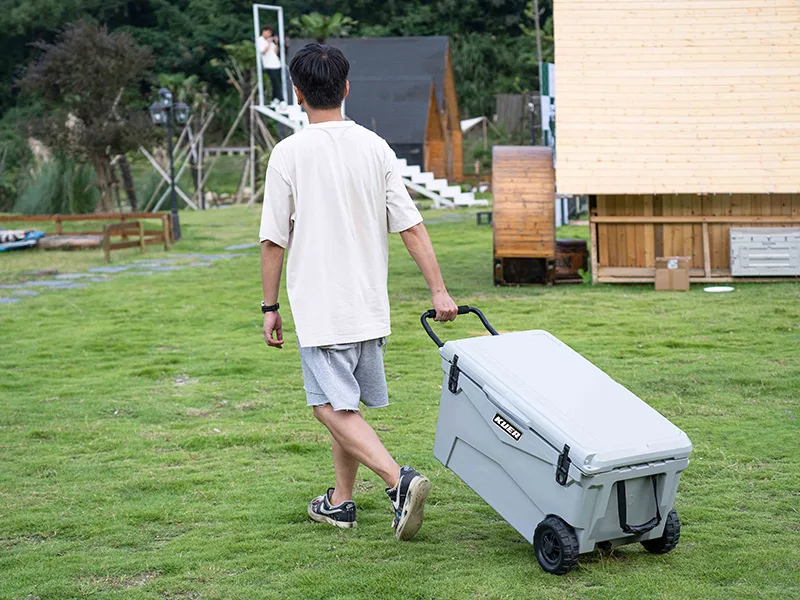
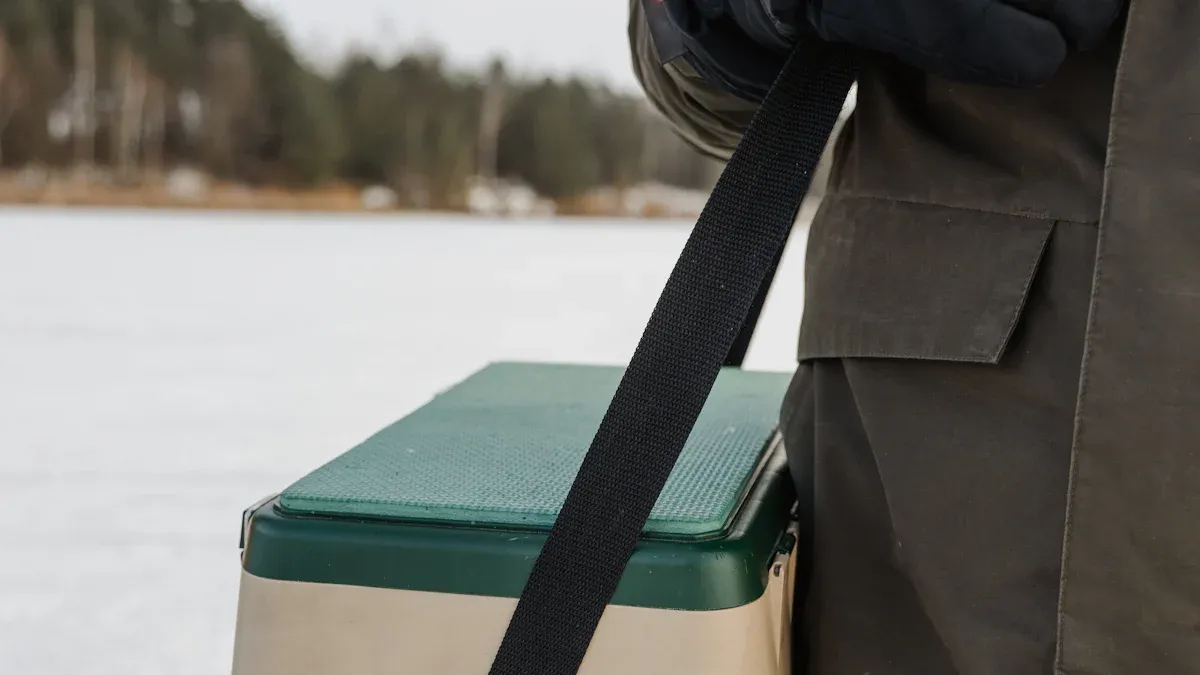
A great mini cooler tote bag is defined by two things: strong construction and how long it keeps things cold. You can spot a quality cooler by its high-denier fabric, a leak-proof lining, and high-density closed-cell foam. The market for cooler bags is growing beyond USD 1.2 billion. A basic cooler often lasts just one year, but a premium cooler can last five years or more.
This guide helps you choose a better cooler from all the cooler bags out there. Finding a durable cooler means you get a reliable cooler. A lasting cooler is the best cooler—a smart cooler choice for your adventures.
WHAT MAKES THE BEST COOLER BAGS LAST?
The secret to the best cooler bags is in the details. A long-lasting cooler combines a tough exterior, a fully leakproof interior, and hardware that can handle daily use. You can spot these features easily when you know what to look for.
DURABLE EXTERIOR FABRIC
The outer fabric is your cooler’s first line of defense against scrapes, scuffs, and tears. You should look for a material with high durability. The fabric’s toughness is often measured in “denier” (D). A higher denier number means the fabric threads are thicker and stronger.
For a mini cooler tote, you want a balance between strength and weight.
Pro Tip: Look for a fabric rating between 400D and 600D. This range offers excellent tear resistance for daily use without making the cooler bag heavy or stiff.
Many high-quality cooler bags also add a waterproof coating to the exterior fabric. The two most common coatings are TPU (thermoplastic polyurethane) and PVC (polyvinyl chloride). Both improve water resistance, but TPU offers better flexibility in cold weather.
| Property | TPU Coating | PVC Coating |
|---|---|---|
| Flexibility | Excellent, even in cold | Fair, can stiffen in cold |
| Abrasion Resistance | Good | Excellent |
| Weight | Lightweight | Heavier |
| Eco-Friendly | Better | Least Eco-Friendly |
A strong fabric ensures your cooler can handle being set on rough surfaces like pavement or sand without damage.
LEAK-PROOF INTERIOR LINING
A cooler is useless if it leaks. A truly leakproof cooler depends on two things: the liner material and how the seams are joined. You should always choose a cooler with a food-grade liner. The FDA requires that any surface touching your food be easy to clean and corrosion-resistant. Materials like PEVA (polyethylene vinyl acetate) and TPU meet these standards. PEVA is non-toxic, while TPU offers superior puncture resistance, making it a great choice for a durable, leakproof cooler.
The most critical feature for a leakproof interior is the seams.
- Stitched Seams: Sewing creates tiny needle holes in the liner. Melted ice will eventually seep through these holes, causing leaks.
- Heat-Sealed Seams: This technology uses heat or radio frequency (RF) welding to fuse the liner panels together. This creates a single, continuous surface with no holes, making the interior 100% leakproof.
To keep your leakproof cooler fresh and clean, follow these simple steps after each use:
- Wipe the inside with a soft cloth using mild soap and warm water.
- Rinse the liner with clean water.
- Dry it completely with a towel, then let it air-dry while open to prevent any moisture buildup.
This simple routine prevents odors and keeps your cooler ready for your next adventure.
ROBUST ZIPPERS AND SEAMS
Zippers and straps are the parts of a cooler you use the most, so their quality is essential for durability. A flimsy zipper will break long before the cooler bag itself wears out. Look for heavy-duty zippers from trusted brands like YKK, which are known for their smooth operation and exceptional longevity. A waterproof zipper is even better, as it creates an airtight seal that locks cold air in and keeps water, sand, and dust out. This makes your cooler completely leakproof from the inside and outside.
Next, inspect the seams, especially where the straps connect to the body of the cooler. This is a major stress point. Top-tier cooler bags use reinforced stitching, like a bar-tack or box-and-X stitch. This dense pattern of stitches creates a powerful anchor that prevents straps from tearing off when the cooler is full.
Brands with deep manufacturing expertise often excel in these construction details. For example, a company like KUER, with its extensive R&D and strict quality control over its entire production process, builds cooler bags designed for reliability. Their focus on high-quality components ensures you get a cooler with strong zippers and reinforced seams that will last for years.
EVALUATING INSULATION FOR PEAK PERFORMANCE
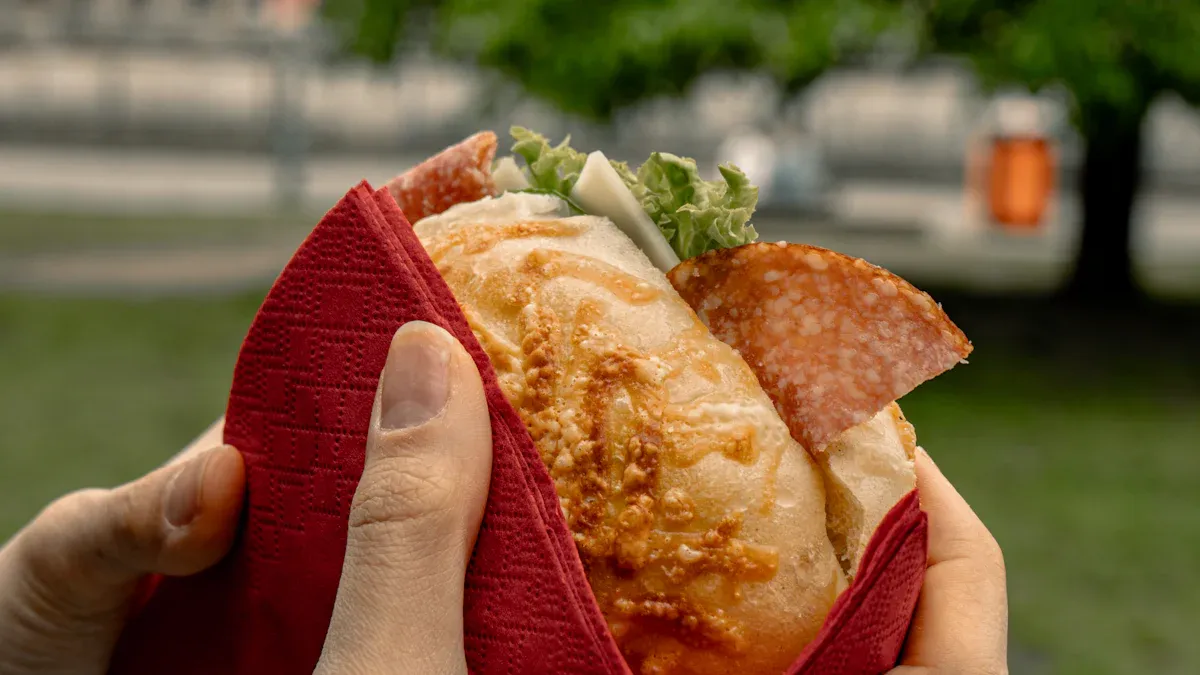
A cooler bag’s exterior and interior are its armor, but the insulation is its engine. The quality of the insulated core directly determines how long your food and drinks stay cold. A poorly insulated cooler will struggle to keep ice for more than a few hours, while a well-insulated cooler can perform for a full day or longer. Understanding insulation helps you choose a cooler that truly delivers on its promise.
CHOOSE CLOSED-CELL FOAM
The best insulated cooler bags use high-density closed-cell foam. Think of this foam as a structure filled with millions of tiny, trapped air bubbles. Each bubble is a separate, sealed pocket. This dense structure makes it very difficult for heat to pass through, keeping the cold locked inside your cooler. In contrast, open-cell foam has interconnected cells, which allows air to move more freely and reduces its insulating power.
The performance of insulation is measured by its R-value. A higher R-value means better thermal resistance. You can see the clear advantage of closed-cell foam from its R-value.
| Foam Type | R-Value Per Inch |
|---|---|
| Closed-Cell Foam | R-5.6 to R-8.0 |
| Open-Cell Foam | R-3.5 to R-4.2 |
Not all closed-cell foams are the same. Many top-tier cooler bags use Polyethylene (PE) foam, which offers excellent thermal insulation and moisture resistance. This makes it a fantastic choice for a durable, high-performance insulated cooler.
Pro Tip: When you inspect a cooler, feel the thickness of the walls. Look for a cooler with insulation that is at least 0.5 inches thick. This thickness provides a strong thermal barrier for most daily needs.
MATCH COOLING DURATION TO YOUR NEEDS
Manufacturers often advertise how long their cooler bags can hold ice, with claims like “keeps cold for 24 hours.” You should use these claims as a starting point, but it’s important to know how they arrive at these numbers. Companies test their insulated cooler bags under ideal lab conditions.
Standard industry tests typically involve:
- Filling the cooler to 100% capacity with cubed ice.
- Keeping the cooler completely closed for the entire test duration.
- Placing the cooler in a room with temperatures alternating between 90°F and 67°F to simulate day and night.
Your real-world use will be different. You will open your cooler, and you probably won’t fill it entirely with ice. The ratio of ice to contents is the biggest factor affecting how long your cooler stays cold. For best results with drinks, a 2:1 ratio of ice-to-liquid is recommended. For a simple lunch, a few good ice packs will keep your food safely chilled.
Choose a cooler with a cooling duration that matches your typical activities. A mini cooler is perfect for single-day outings.
- Lunch Break (4-6 hours): Any well-insulated cooler bag will work perfectly.
- Afternoon Picnic (6-12 hours): Look for a cooler that claims at least 12-24 hours of cold retention.
- Full-Day Trip (12-24 hours): You need a high-performance cooler. Choose one advertised to keep ice for 24 hours or more to ensure your items stay cold until the end of the day.
By matching the insulated performance to your lifestyle, you ensure your new cooler is always up to the task.
FINDING THE RIGHT MINI COOLER TOTE BAG SIZE
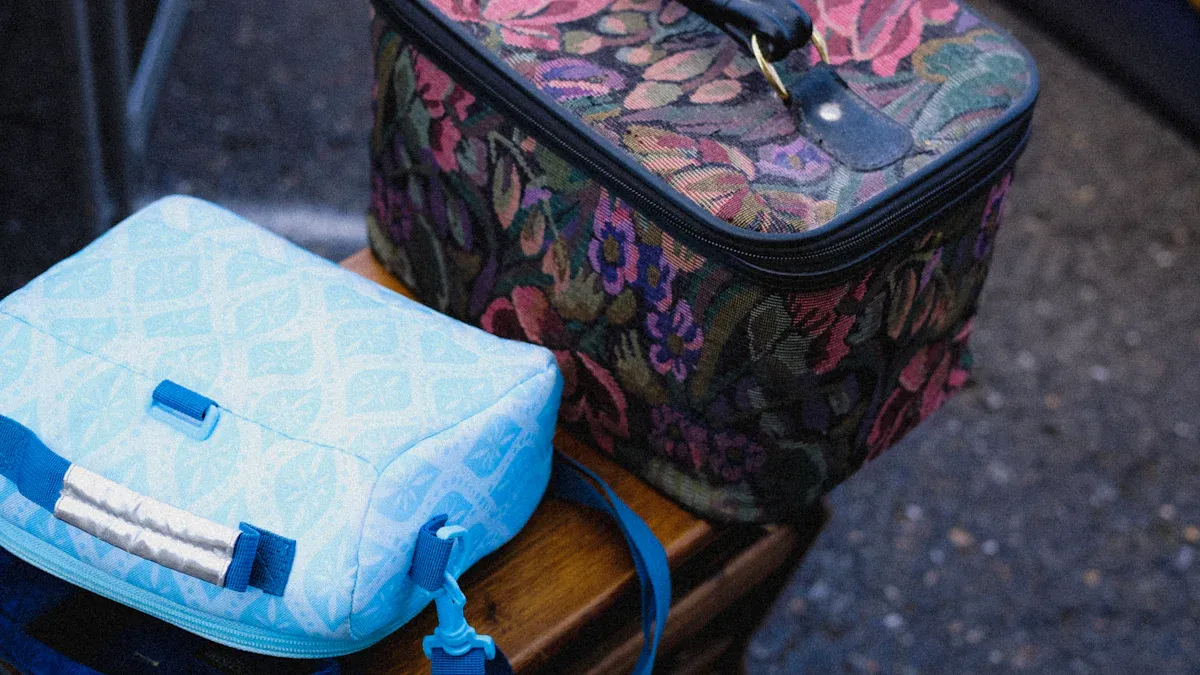
Beyond durability and insulation, the right size determines how useful your cooler will be. A cooler that is too big is a burden to carry, while one that is too small won’t fit your needs. Finding the perfect balance between capacity and portability is key.
VISUALIZE CAPACITY
Manufacturers often list a cooler’s capacity in liters or the number of cans it can hold. Using cans as a measure helps you visualize the internal space. A larger cooler isn’t always better, especially for a mini cooler tote bag where portability matters. This chart shows how different cooler sizes translate to can capacity.
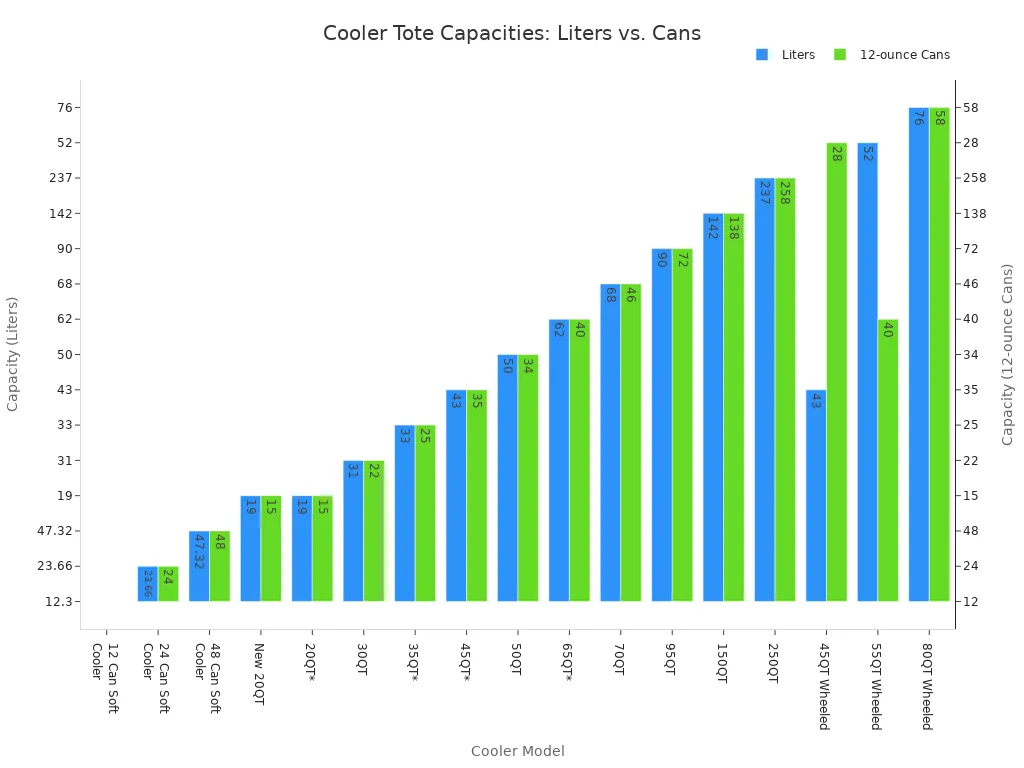
A Simple Guide for Choosing Your Cooler Size:
- Solo Lunch: A small cooler around 15 quarts is perfect for one person. This size is easy to carry and offers enough space for a day’s meal and drinks.
- Small Family Outing: For a few hours with a small group, look for medium cooler bags with a capacity of 16 to 35 quarts. This gives you more room without being too bulky.
PRIORITIZE CARRYING COMFORT
A fully loaded cooler bag can get heavy. Comfortable straps are essential to prevent shoulder strain. You should look for a cooler with ergonomic straps designed to distribute weight evenly. A wide strap, typically 2 to 3 inches, prevents the strap from digging into your shoulder.
Look for these features for maximum comfort:
- Wide, Padded Straps: Thick padding cushions your shoulder from the weight.
- Ergonomic Shape: Straps with a slight curve fit the natural shape of your body better than straight ones.
- Durable Material: Strong materials ensure the straps on your cooler bags last as long as the cooler itself.
These small details make a huge difference when you carry your cooler over long distances.
LOOK FOR USEFUL EXTRA FEATURES
The best cooler bags often include thoughtful features that make your life easier. While the core job of a mini cooler tote bag is to keep things cold, these extras add significant value. A great insulated cooler is one that fits your lifestyle.
Consider these popular add-ons:
- Exterior Pockets: Zippered or mesh pockets are perfect for holding items that don’t need to be chilled, like your keys, phone, or utensils.
- Tie-Down Points: Loops or D-rings let you secure your cooler to a boat, kayak, or backpack.
- Built-in Bottle Opener: Some cooler bags have a bottle opener attached to the zipper or strap, so you’re always prepared.
Choosing a cooler with the right features ensures it is ready for any adventure.
Choosing the right mini cooler tote bag is simple when you know what to look for. Your perfect cooler has these features:
- High-denier fabric for a tough cooler.
- A heat-sealed PEVA/TPU liner for a leakproof cooler.
- Heavy-duty zippers on your cooler.
- Thick closed-cell foam for a better insulated cooler.
- The right size for your cooler.
Investing in a quality cooler with great construction, like a KUER cooler, means you get a reliable cooler for every trip. This cooler will be a great mini cooler tote bag.
Use this checklist on your next purchase to choose a mini cooler tote that will last for years.
FAQ
What is the difference between a hard-sided cooler and a soft-sided cooler?
A hard-sided cooler offers the best ice retention. A hard-sided cooler is also extremely durable. However, a soft-sided cooler gives you superior portability. This feature makes the cooler much easier to carry. A heavy hard-sided cooler is not a practical daily cooler for most people.
How do I stop my cooler from smelling?
You can easily keep your cooler fresh. You must dry your cooler completely after each cleaning. You should leave the cooler open to air out. This simple step prevents bad odors inside your cooler. A clean cooler is a better cooler for your food.
Are ice packs better than ice for my cooler?
Ice packs are a tidy choice for your cooler. They prevent a watery mess inside the cooler. Cubed ice, however, cools the cooler down faster. It fills all the empty space in your cooler. Many people use both in their cooler for the best cooler performance.
What is the best size for a daily cooler?
The best cooler size depends on your needs. A 15-quart cooler is a great personal cooler. This cooler holds lunch for one person. A larger cooler, like a 20-quart cooler, is a good cooler for two people. Always choose a cooler you can carry easily.

